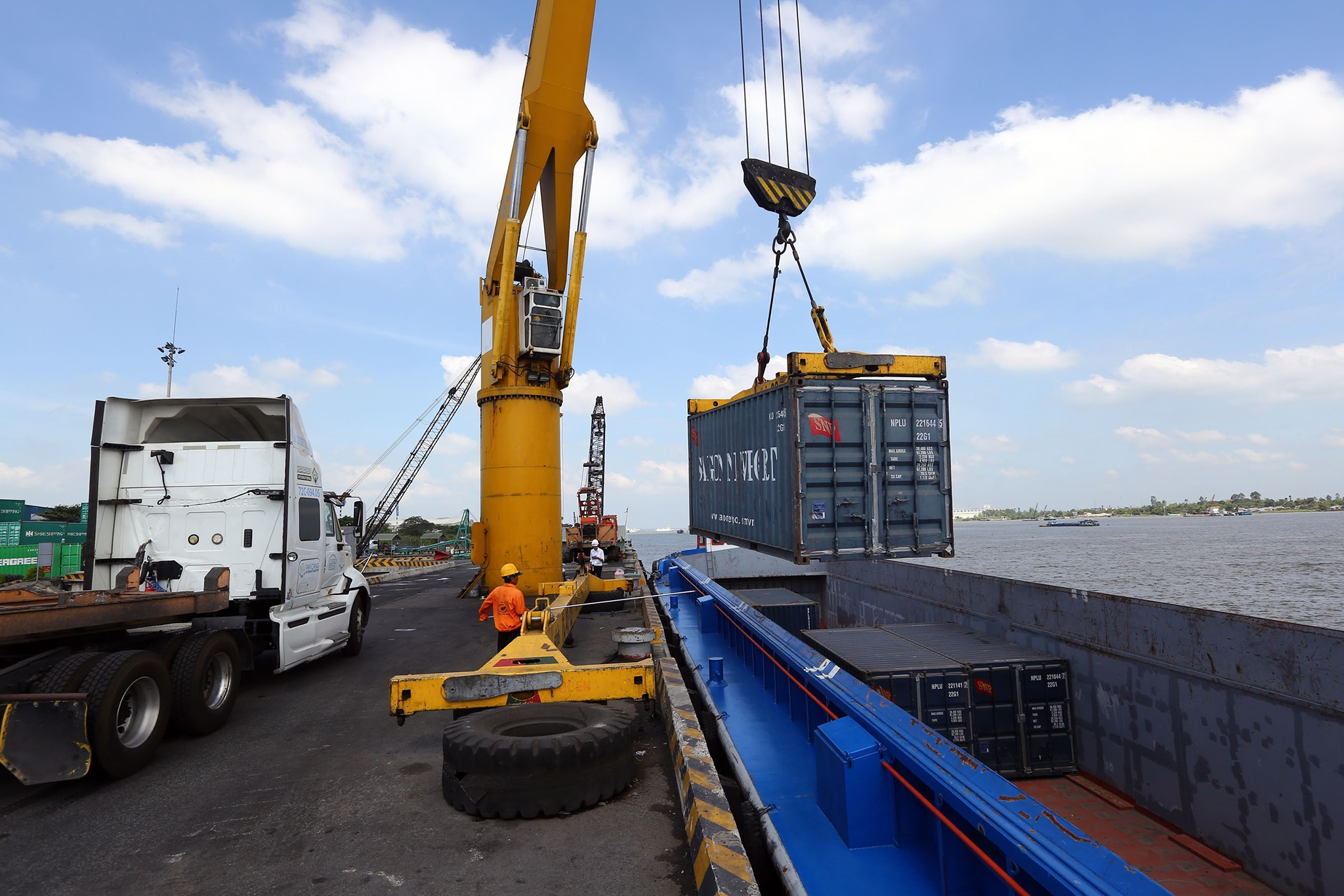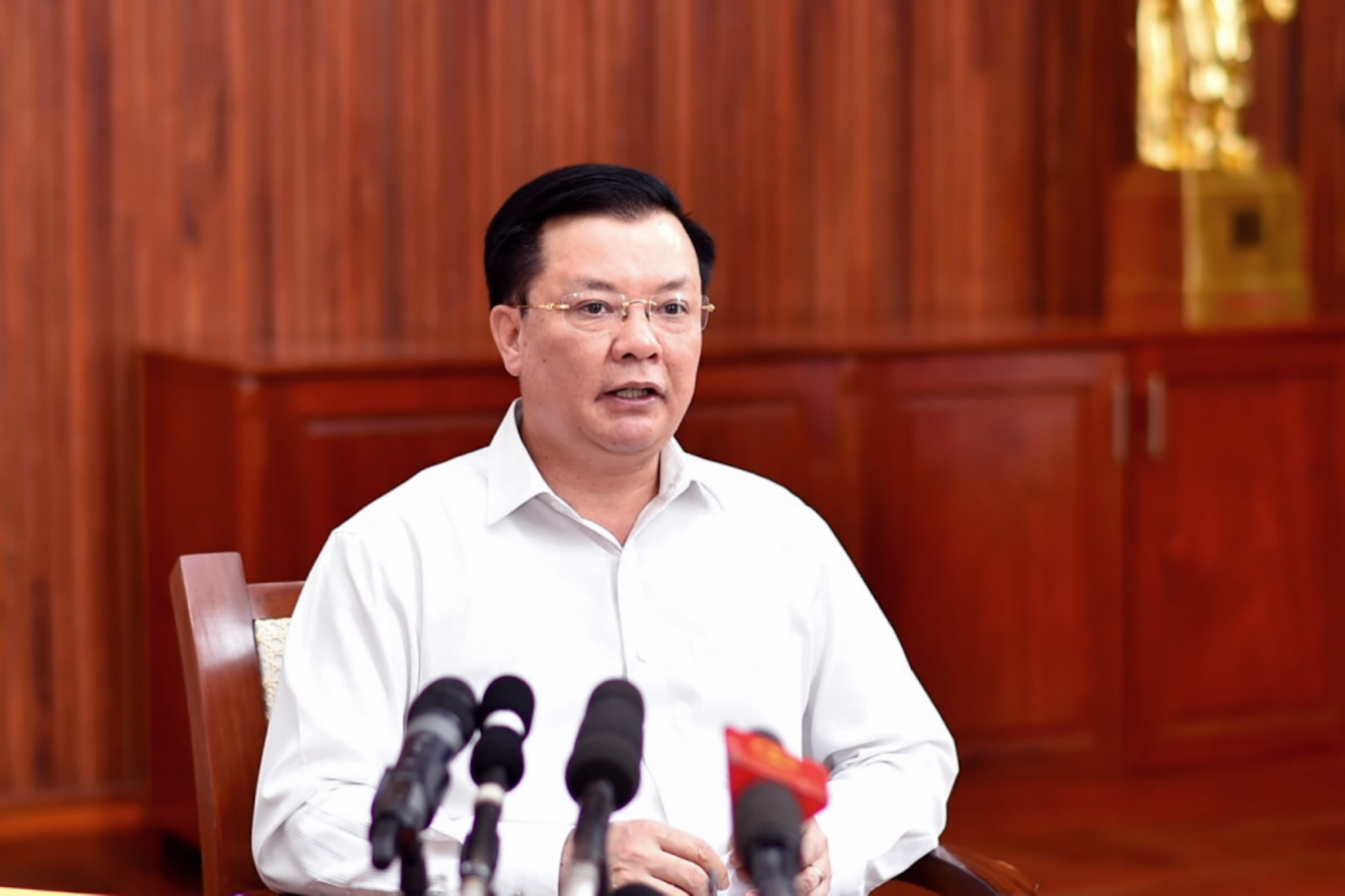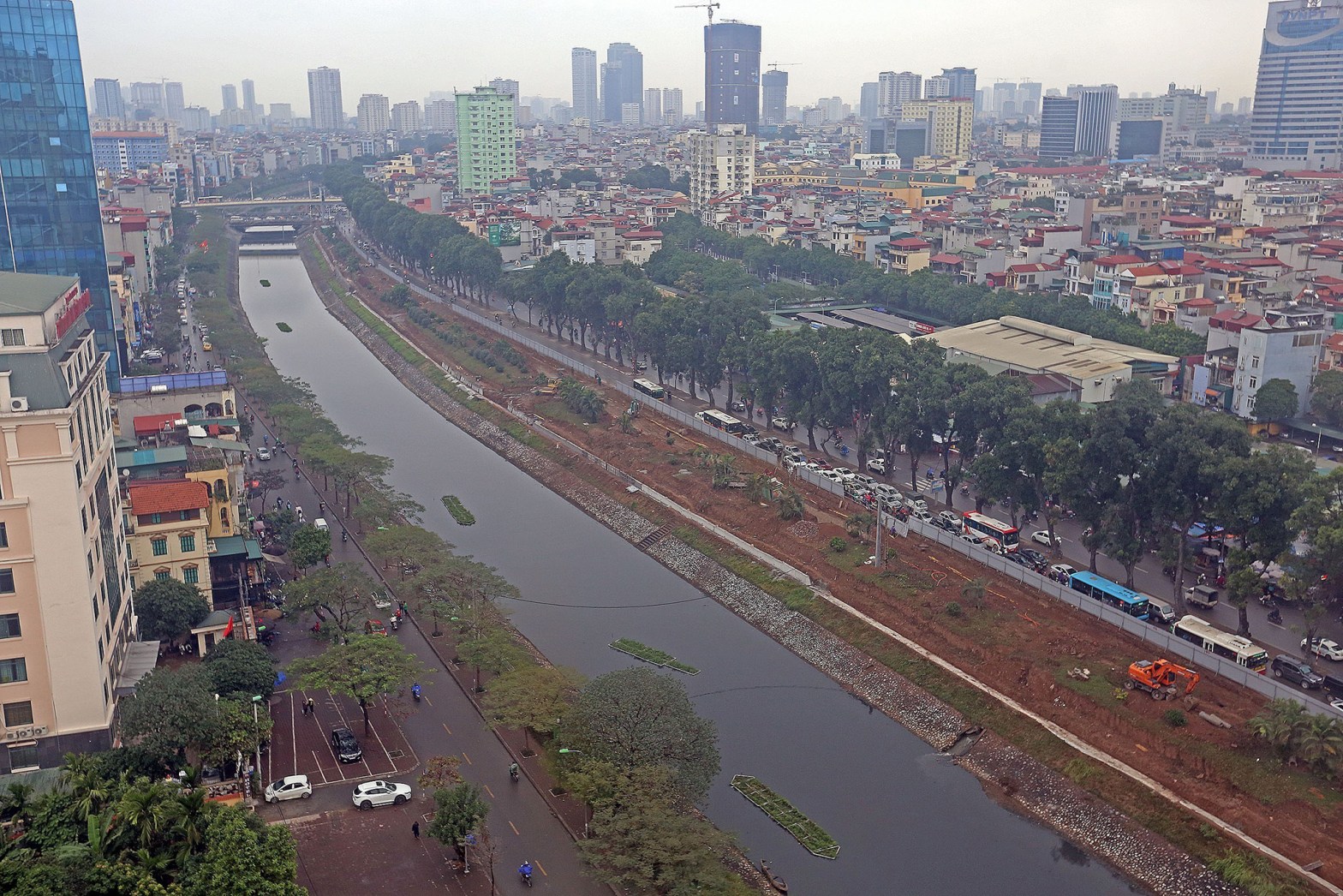2018 was a successfulyear for the Vietnamese economywith budget collection topping 1.4 quadrillion VND (60.2 billion USD), exceeding expectations by more than 100 trillion VND. In the first days of 2019, Minister of Finance Dinh Tien Dung spoke to the media on major achievements throughout the year.
Along with socio-economic success, the financial-budget work also saw comprehensive results, said the minister.
State budget collection and spending as well as public finance work in 2018 showed positive outcomes, completing targets set in Politburo Resolution 07/NQ-TW.
In 2018, State budget collection surpassed the estimate by 7.8 percent, with the central budget exceeding the target by 4.3 percent, and local budget 12.5 percent higher than the goal.
The localisation rate in State budget collection reached 80.6 percent, he noted.
Budget spending structure was transformed positively, with more than 27 percent spent for development investment, higher than the target for 2016-2020 at 25-26 percent. Regular spending fell to 62 percent of the total.

In 2018, State budget collection surpassed the estimate by 7.8 percent, with the central budget exceeding the target by 4.3 percent, and local budget reaching 12.5 percent higher than the goal. (Photo: VNA)
State budget overspending in 2018 was under 3.6 percent of GDP, while public debt accounted for about 61 percent of GDP. Public debt management showed progress, easing the impact of risks, said the minister.
At the same time, in 2018, the Ministry of Finance deployed administrative reform measures and re-organised its personnel system.
So far, online tax declaration has been launched in all the 63 cities and provinces, which has been used by 99.92 percent of the businesses. Alongside, 98.41 percent of the total enterprises registered to pay tax online, while 93.14 percent of the total dossiers for tax refund were processed online.
“Last year, the ministry completed all the 85 administrative tasks it planned, deleting 18 among the 166 reviewed procedures, and simplifying 111 out of 139 others. The ministry also cut and simplified 117 out of the 190 business and investment conditions under its management.”
Also in 2018, the ministry implemented 98,660 inspections, proposing the financial settlement of more than 23.14 trillion VND, including 17.94 trillion VND reclaimed to the state budget.
However, the minister also admitted several shortcomings and weaknesses that need tackling, including slow disbursement, equitisation and divestment in State-owned enterprises as well as economic reform and public investment.
Foreign debts remained high at about 49.7 percent of GDP, he noted, adding that the observation of financial rules was poor in some agencies, leading to losses.
Minister Dung said budget collection in three economic sectors saw good growth from 2017, with 4 percent in the State-owned sector, 8.8 percent in the FDI sector and 15.8 percent in the private sector.
However, collection in all the three sectors failed to meet the target. The minister attributed the situation to difficulties facing production and business activities for some areas and sectors, along with natural disasters’ impact. The economic restructuring and slow settlement of bad debts also put pressureon budget collection, he added.

In the near future, the ministry will continue implementing Resolution 51/NQ/VP to reform budget collection resources, striving to complete the domestic collection goal in 2016-2020 at about 85 percent of the total State budget collection, he stated.
Regarding the pressure of original debt payment, which is estimated at 197 trillion VND in 2019, to the State budget, Minister Dung said in 2013-2015, the Vietnamese economy was affected by the global financial crisis. Therefore, the country mobilised a great deal of resources from loans with terms ranging from 3-5 years.
This has led to rapidly rising demand in original debt payment in recent years. The payment was 144 trillion VND in 2017, and 146.77 trillion VND in 2018. The figure in 2019 is estimated at 181.97 trillion VND, and 197 trillion VND if the payments of localities are included.
However, authorised agencies have reformed the structure of public debt in terms, interest rates as well as domestic and foreign loans. Specifically, the average the Government bond term was set at 3.9 years in 2011, 12.74 years in 2017, and 12.89 years in 2019. Therefore, the average loans’ term for Government bond was 1.84 years in 2011, 6.7 years in 2017, and 6.69 years as of the end of September 2018.
Although the payment of original debts is not calculated in the State budget balance, the payment of due debts has been implemented fully and in a timely manner, thus not increasing the ratio of Government’s debts, ensuring national financial safety, said the official.
He said that in the future, the scale of original debt payment will continue to increase.
On measures to minimise State budget waste due to the low rate of disbursement of capital construction investment, Minister Dung said that as of December 15, 2018, more than 242.38 trillion VND was disbursed through the State Treasury, reaching 61.8 percent of the capital plan of 2018. By January 31, 2019, the figure was estimated at 313.87 trillion VND, 80 percent of 2018’s plan.
The disbursement of capital construction capital was lower than the yearly plan set by the Government, he noted.
In 2018, the Government bonds allocated to ministries, sectors and localities were mostly for newly-launched projects, which were approved in October 2017 and on the stage of technical design for tendering. Therefore, the disbursement of the Government bond capital was mostly implemented in late 2018. The disbursement rate as of December 15, 2019 reached only 31 percent, much lower than that in the same period in 2017 at 61 percent, thus leading to the low average rate, he explained.
Obstacles during compensation for ground clearance also affected the progress of the projects as well as disbursement speed, the official said, adding that the restructuring and completion of organisations of project management boards also slowed the process.

Problems in policies and mechanisms also affected the progress of public investment capital, he said.
The Ministry of Finance has proposed the Government direct the ministries, sectors and localities to focus on dealing with issues related to mechanisms and policies by revising the Law on Construction, the Law on Investment, the Land Law and other guiding documents.
For ODA projects, the ministry suggested speeding up disbursement progress, while adjusting the capital plan to suit the development of the projects.
The ministry also urged other ministries, sectors and localities to direct investors to focus on accelerating the progress of projects’ implementation and making prompt payment for completed items at the State Treasury, stated the minister.-VNA

